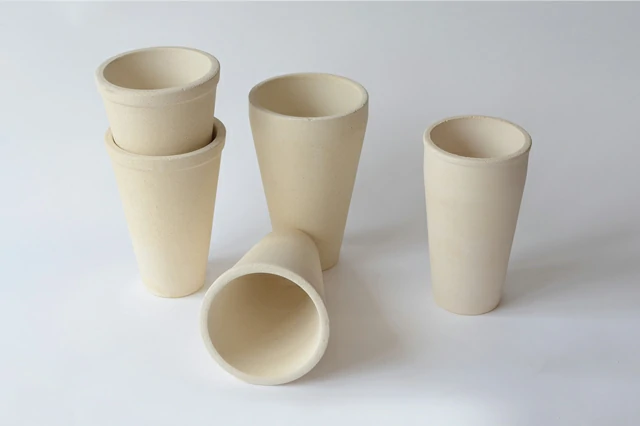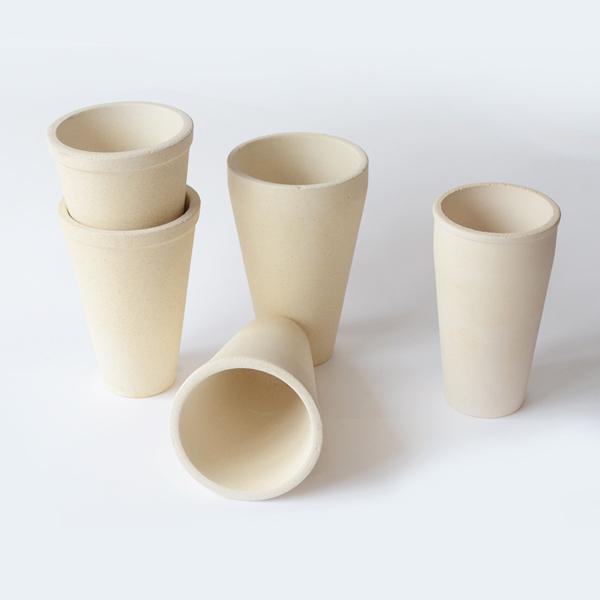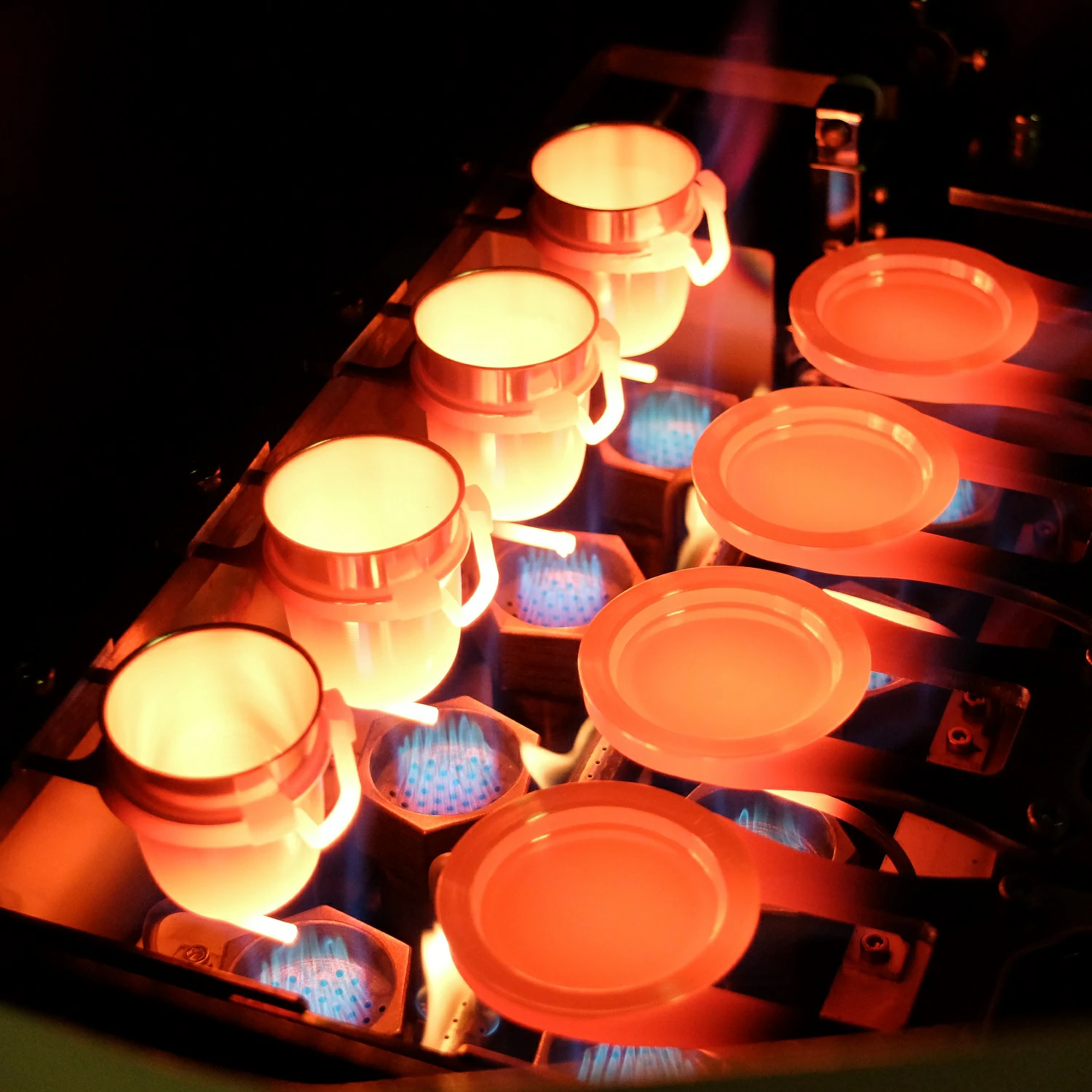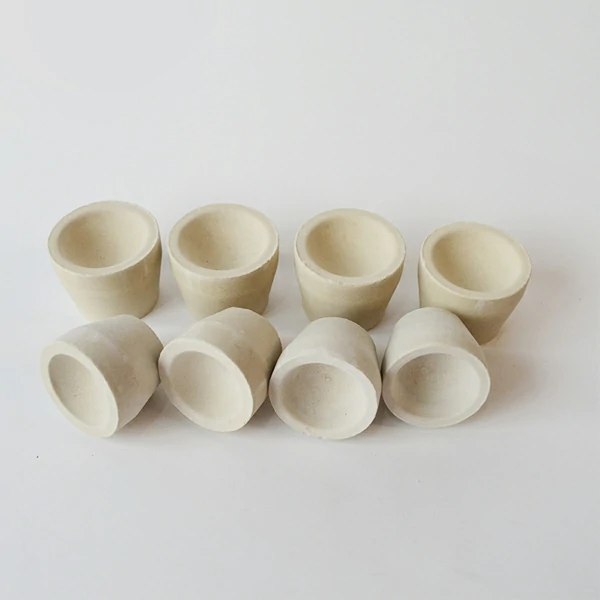
A fire assay crucible is a specialized ceramic vessel widely used in the fire assay method, a traditional yet highly accurate process for determining the concentration of precious metals like gold, silver, and platinum group metals (PGMs). This technique is considered the most reliable and precise method for analyzing ores, concentrates, and scrap materials in the mining and metallurgy industries. Below, we explore the applications of fire assay crucible in various sectors and processes.
1. Precious Metal Analysis
The primary application of the fire assay crucible is in precious metal analysis. It is used to accurately determine the content of gold, silver, and other precious metals in materials like ore samples, concentrates, and bullion. During the fire assay process, the crucible holds the sample and flux, which undergoes high-temperature fusion, separating and quantifying the valuable metals efficiently.
2. Precious Metal Recovery
Beyond assaying, fire assay crucibles are integral in the precious metal recovery process. Industries dealing with materials like electronic waste use these crucibles to measure metal content accurately before refining. The crucibles help extract gold, silver, and other metals by separating them from base metals and impurities. High heat and flux facilitate the effective recovery of these valuable metals.
3. Ore Processing and Testing
Fire assay crucibles are commonly used in ore processing to test ore samples for precious metal concentration before large-scale processing begins. This critical step helps mining companies assess the value of ore deposits and decide on the best method for precious metal extraction. By using fire assay crucibles, mining operations can optimize the extraction process, ensuring better efficiency and profitability.
4. Testing of Scrap Materials
For industries that recycle scrap metals—such as jewelry, electronic waste, and industrial byproducts—fire assay crucibles are employed to analyze the precious metal content. This ensures that businesses can effectively and profitably extract gold, silver, and other valuable metals from recycled materials, meeting both quality and environmental standards.
5. Refining and Metallurgical Applications
In refining, fire assay crucibles are used to purify gold and silver after they’ve been separated from ores or scrap materials. This refining process ensures that metals are brought to high-purity levels, which is essential for both market sale and industrial use. Fire assay crucibles play a crucial role in maintaining precision and quality during the refining phase of precious metal production.
6. Jewelry and Bullion
The fire assay method is also used in the jewelry industry and by assay offices to verify the purity of gold alloys, bullion, and finished products. This verification process ensures that these precious metals meet both industry quality standards and legal requirements, providing confidence in the authenticity and value of the material.
7. Environmental Monitoring
Fire assay crucibles are employed in environmental laboratories for the detection of trace amounts of precious metals in soil and water samples. By using these crucibles, environmental scientists can measure low concentrations of precious metals that may have environmental implications, such as contamination in water or soil.
Types of Fire Assay Crucibles
Graphite Crucibles: Preferred for high-temperature applications due to their excellent heat resistance, graphite crucibles are used for fire assays that require extreme conditions.
Clay Crucibles: Clay crucibles are the most commonly used for fire assay testing, thanks to their stability and heat-resisting properties. They provide a cost-effective solution for various fire assay processes.
Ceramic Crucibles: Known for their durability and resistance to chemical reactions, ceramic crucibles are ideal for assaying complex ores and other materials that may be chemically aggressive.
Conclusion
The fire assay crucible is an indispensable tool in the accurate determination, recovery, and refining of precious metals across several industries. Whether used in precious metal analysis, scrap metal recovery, or environmental monitoring, these crucibles are essential for efficient and precise metal testing. With various options such as graphite, clay, and ceramic, the fire assay crucible serves a wide range of applications, ensuring optimal results for mining, metallurgy, and other sectors focused on the handling of valuable metals.




